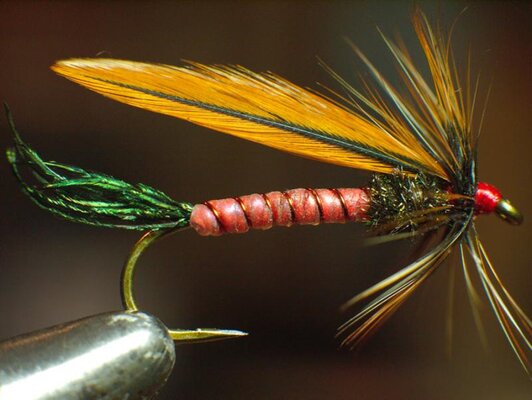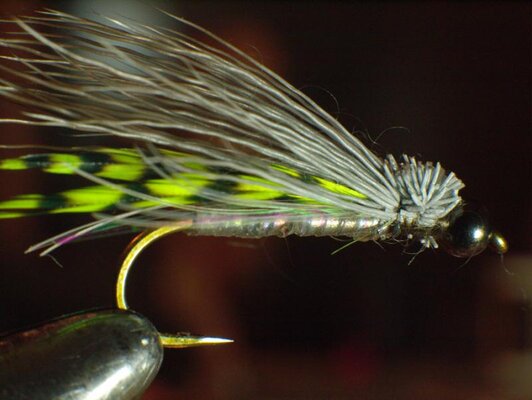M
mlw
0
I went to Jay's sea run class, it was great.
I'll second the Borden Special recommendation - for those who may be interested, Bob Borden started Hareline Dubbin, the nations premier fly tying material supplier, located right down the street here in Monroe, Oregon (strictly wholesale only - I would love to go get a tour, but I gather that such things don't happen.
In general, you want to cast them toward the bank, shadow or structure, and strip them back slowly, or perhaps quickly. results may vary
Here are a couple sea run cutt flies I tied a few months ago, a rolled muddler (U.V. Chewee Skin body, yellow-chartruese grizzly hackle tips), and a spruce fly variation, also with a U.V. Chewee Skin body. I used regular brown furnace hackle and wing, it is also or often tied with silver badger hackle, which I have been looking for.


Michael
I'll second the Borden Special recommendation - for those who may be interested, Bob Borden started Hareline Dubbin, the nations premier fly tying material supplier, located right down the street here in Monroe, Oregon (strictly wholesale only - I would love to go get a tour, but I gather that such things don't happen.
In general, you want to cast them toward the bank, shadow or structure, and strip them back slowly, or perhaps quickly. results may vary
Here are a couple sea run cutt flies I tied a few months ago, a rolled muddler (U.V. Chewee Skin body, yellow-chartruese grizzly hackle tips), and a spruce fly variation, also with a U.V. Chewee Skin body. I used regular brown furnace hackle and wing, it is also or often tied with silver badger hackle, which I have been looking for.


Michael